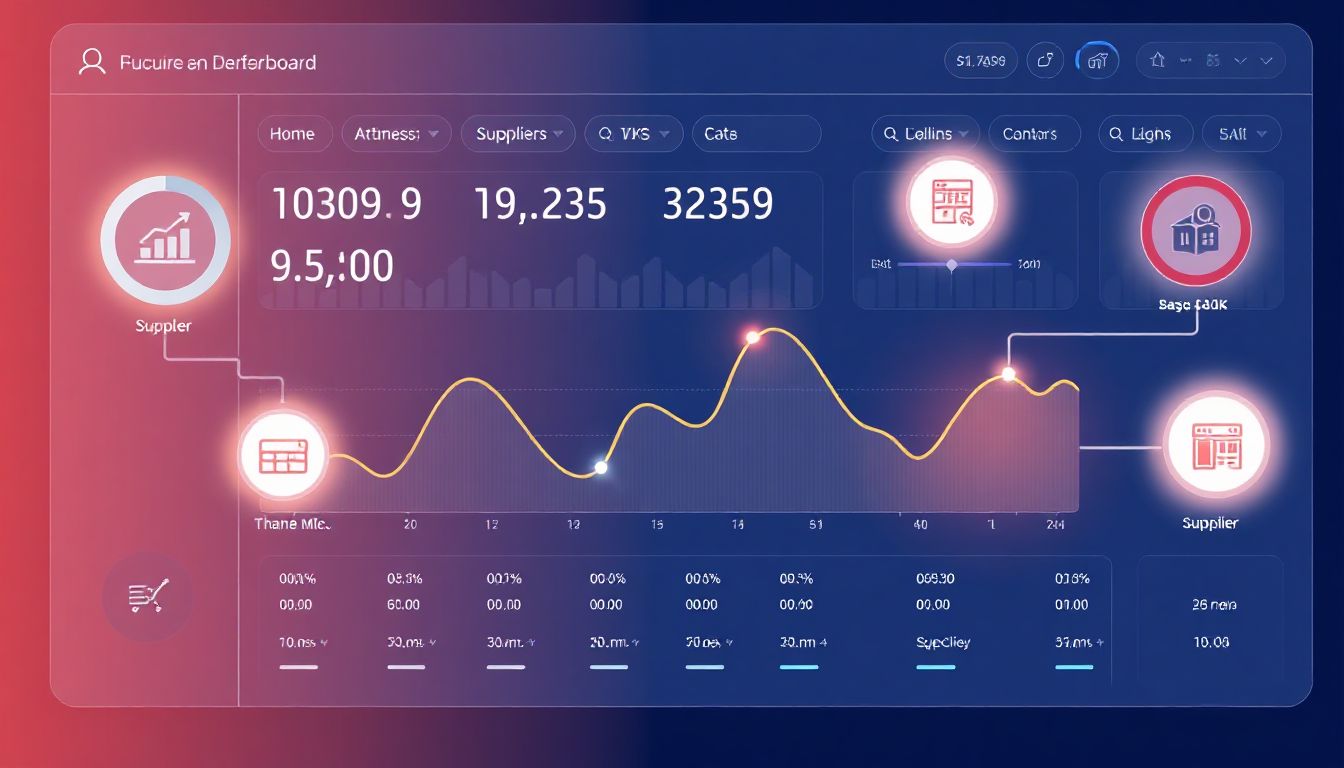How to Manage Supplier Performance Using Digital Platforms

How to Master Supplier Performance: Your Guide to Digital Platform Management
Today's supply chains are more intricate than ever. Businesses face many challenges keeping goods moving. Managing how well suppliers perform is key to reaching your company goals. We are seeing a big shift from old ways of tracking suppliers to new, smart digital tools.
This article shows you how to use digital platforms. These tools help you watch, review, and boost how your suppliers work. A digital approach brings many good things. Think about more efficiency, decisions made with real facts, and better teamwork.
The Evolution of Supplier Performance Management
From Spreadsheets to Sophistication
Old ways of managing suppliers created many problems. Businesses used spreadsheets and email. This led to slow work and mistakes from typing things in by hand. It was hard to see what was happening right now. Plus, analyzing data was almost impossible.
The Digital Transformation Imperative
More and more businesses are moving to digital platforms for managing suppliers. This change is vital. Companies need tools that can grow with them. They want to automate tasks and get deep insights from their data. Digital solutions make supply chain operations much smoother.
Key Features of Digital Supplier Performance Platforms
Centralized Data and Communication Hubs
Digital platforms act as a central hub. They collect data from many places. This includes your existing business systems, shipping companies, and quality checks. Platforms also gather info from surveys. Making sure data is correct and standard is very important here.
Real-time Data Aggregation
These tools bring all supplier information together. You see everything in one spot. This real-time view helps avoid delays. It ensures everyone works from the same facts. Accuracy leads to better choices.
Streamlined Communication and Collaboration
Platforms offer easy ways to talk with suppliers. You can send messages, share files, and view shared dashboards. This makes solving problems faster. It also helps manage projects with your suppliers. Everyone stays on the same page.
Performance Monitoring and Analytics Tools
Customizable Key Performance Indicators (KPIs)
Digital platforms let you set up specific goals for suppliers. You can track things like delivery times or how many products are faulty. You can also watch cost savings and how fast suppliers respond. Pick KPIs that directly help your business goals.
Automated Reporting and Dashboards
These systems make reports for you automatically. They show how suppliers are doing using easy-to-read charts. Some even try to guess future performance. A manufacturing company might use its platform to track on-time delivery rates. If a supplier often misses deadlines, the platform quickly flags it.
Implementing a Digital Supplier Performance Management Strategy
Selecting the Right Platform
Choosing the best platform is a big step. First, think about what your business really needs. Consider how it will fit with other systems and your budget. Also, think about how much it can grow.
Assessing Business Needs and Objectives
What do you want the platform to do? Do you need it to integrate with other software? How much can you spend? Knowing your specific needs helps narrow down choices. Pick a system that matches your business aims.
Vendor Evaluation and Due Diligence
When looking at platform providers, check their features and prices. See what kind of customer help they offer. Ask about their security too. It's smart to ask for product demonstrations. Talk to other companies who use their platform.
Onboarding Suppliers and Data Integration
Supplier Onboarding Processes
Bringing suppliers onto a new digital platform needs a clear plan. It’s important to make it easy for them. Offer training and clear guides to help them get started. A smooth start means better use later.
Integrating with Existing Systems
The new platform should work with your current systems. This includes your sales, customer service, or supply chain tools. "Seamless integration is key to unlocking the full potential of digital supplier management platforms," says Dr. Lena Khan, Supply Chain Strategist at Global Insights Group. A unified data flow makes everything efficient.
Driving Continuous Improvement Through Data
Identifying Performance Gaps and Opportunities
Digital platforms provide a lot of data. This data helps find problems and chances to do better. You can see where things are falling short. This helps you act quickly.
Root Cause Analysis
Platform analytics help you find out why problems happen. This is called root cause analysis. For example, a retail giant uses its platform to review product returns. It might find that a certain part from one supplier is often faulty. This helps them fix the real problem.
Benchmarking and Best Practices
Platforms can show you how your suppliers compare. You can see how they measure up to industry standards. Or, you can see how they compare to your best suppliers. This helps you find areas to improve.
Fostering Supplier Relationships and Development
Proactive Performance Feedback
Sharing regular feedback with suppliers through the platform is a good idea. This feedback should be based on data. It makes things clear and helps suppliers get better. Good communication builds trust.
Supplier Development Programs
The insights you get from the platform can guide special training for suppliers. This leads to stronger partnerships. It also boosts their performance. Companies that actively manage supplier performance see an average reduction of 12% in supply chain disruptions.
Conclusion
Digital platforms are a big advantage for managing suppliers today. They offer better visibility. They help you make smart choices based on real facts. These tools improve efficiency and build stronger relationships with your suppliers. Explore and adopt digital solutions for your supply chain. This helps achieve steady growth.



Comments
Post a Comment